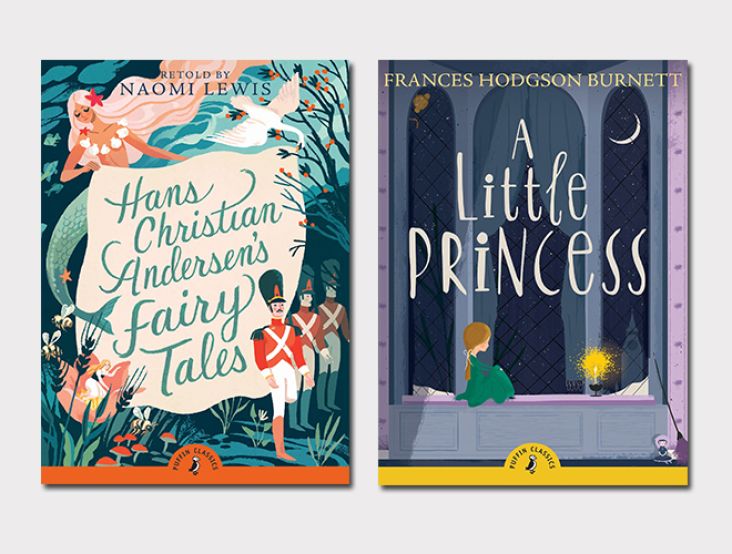How Pixar’s 22 rules of story help you write engaging client case studies
When Pixar artist Emma Coats tweeted 22 golden rules of storytelling, she wasn't thinking they would help creatives get new clients: yet nearly all her advice directly applies to writing captivating case studies.

Image licensed via Adobe Stock
Use these tactics to give your website genuinely 'sticky' content, and tell potential customers your success stories in ways that'll keep them hooked until the very end.
Warning: Pixar’s rules are not mentioned in 1-22 order. Instead they appear in the order that help to inspire readable case studies.
Case stories need a strong protagonist
#2: Keep in mind what's interesting to you as an audience, not what's fun to do as a writer. They can be v. different.
#21: You gotta identify with your situation/characters, can't just write ‘cool'. What would make YOU act that way?
The best stories have a determined, proactive protagonist: we all want to see a bit of ourselves in the main character, and it’s human nature to view ourselves as masters of our destiny. To get what you want, you take action.
Case studies are not so much boy-meets-girl, as brand meets expert. You are the expert, hoping to attract more brands – so make the brand the main character in the story.
Making the brand, the protagonist is the first step to success, only because your next potential customer will see the story from their viewpoint.
It’s a quick win tactic in the battle for empathy and sympathy (which are different. You feel empathy when you've ‘been there’, and sympathy when you haven't…but still get a strong feeling you’d hate it to happen to you).
Starting your case story
#4: (part 1) Once upon a time there was ___. Every day, ___.
Let Pixar’s rule #4 guide your intro: Who is the brand? What business are they in? Are they big or small, old or new? Who are their customers?
You need to get all this over quickly and economically because long intros about company history, sites, products, employee demographics and turnover are deadly dull - your reader will be heading to Buzzfeed before you can say Buzz Lightyear.
#4: (part 2) One day ___. Because of that, ___.
One day…something happened to shake up the balance of their world. It could be positive (client win, new product, etc.) or negative (profit warning, zombie attack). Describe this world-shaking event in brief but interesting detail, bearing in mind rules #6, #16 and #19.
#6: What is your character good at, comfortable with? Throw the polar opposite at them. Challenge them. How do they deal?
#16: What are the stakes? Give us reason to root for the character.
This might be as simple as some ambitious targets and objectives. Still, it’s even better if they’re tinted with some sympathetic, people factors, i.e. generate charitable donations, save jobs, save lives, even something as simple as a product that makes life easier….whatever. Every case is different, but everyone worth writing has an angle that makes it human. Factors that go beyond making cash make the story much more engaging, and therefore, readable to the end.
#19: Coincidences to get characters into trouble are great.
Was the problem due to some macroeconomic shock your reader would have heard of - and therefore can empathise with? Or any other widely-felt problem in your industry?
Because of that – came you. Or at least the search for you, which allows you to describe how you became the chosen one, outgunning the competition with your creative genius.
Moving the plot on
So we’ve set the background, introduced the characters and shown the inciting incident. What happened next? Because of hiring you, things got better, right? We want details. If you're going to hook your reader in, we want to know if things got worse before they got better: conflict is the lifeblood of the story.
Were there initial doubts? Reticent stakeholders, to win over? No-one liked the initial creative ideas? Did you have to go back to the drawing board? Were there logistical nightmares? Communications issues? Sleep-defying deadlines?
The best case stories will include elements of adversity…see rule numero uno:
#1: You admire a character for trying more than for their successes.
Provide specific detailed examples of the action that resulted in problems being solved. Remember to structure it all as ‘because of that, then because of that, then because of that,’ i.e. the good old simple-is-genius ‘therefore/but method’ of telling a story.
Don’t break character
With the brand as a protagonist, every word you write is coming out of your client’s mouth. It’s their story, so you need a willing collaborator to be their spokesperson/emissary, hence:
#13: Give your characters opinions.
You brand emissary will have vivid opinions of your work, and views of you. Get these opinions in. If they weren’t mostly positive, you wouldn’t be writing this case study together, so applying #15 should result in authentic praise.
#15: If you were your character, in this situation, how would you feel? Honesty lends credibility to unbelievable situations.
The honesty of Rule #15 also applies to adopt the tone and vocabulary that your brand emissary uses in real life. Don’t be shy about tooting your own trumpet. Be bold about how you impressed them during the selection process/early meetings/results - make sure the tone sounds like real-life humans, not glossy brochures – reading aloud will help.
Build up the piece like it’s a news story in the business press, i.e. bits the journalist wrote, interlinking ‘talking head’ quotes from your brand spokespeople (it can help keep the prose fresh, bringing in additional voices from the brand). Mention spokespeople by full name, job time and proximity to the work. Give each their voice – make them sound unique, if you can.
#4: (part 3) Because of that, ___. Until finally ___.
Keep repeating the ‘because of that’ until you’ve told the full story. For best effect, there should be ups and downs, challenges and rallying comebacks. Just like Nemo’s dad.
'Until Finally' is the results, the objectives met/bested. Don’t publish case studies that detail the problem and the solution, then decline to include the results. Case studies are there to prove you can make a difference -not providing the results proves nothing, and you’d be contradicting Pixar rule #14.
#14: Why must you tell THIS story? What's the belief burning within you that your account feeds off? That's the heart of it.
'Until finally' is the end of the story - or at least this volume of it - but use your design skills to splash the results all over the page, to hook skim readers into the meat of the story.
Facts and figures are kings. Include as many as you can. Steer clear of the wishy-washy, because readers want the detail and plenty of it.
Your client may be a little shy about revealing the actual results of a campaign, but with so much information in the public domain - mentions on Twitter, Facebook shares, amount of coverage on news/blog sites - if you’re willing to put the effort in you can certainly agree on some compelling stats everybody will be happy to publicise.
Now you’ve got your story, you've got to write it!
To hold readers’ attention, keep it simple, keep it direct, and bear in mind #22 and #5.
#22: What's the essence of your story? The most economical telling of it? If you know that, you can build out from there.
#5: Simplify. Focus. Combine characters. Hop over detours. You'll feel like you're losing valuable stuff, but it sets you free.
Writing in character as your client should help you keep it honest and avoid hyperbole - and crucially, not go for the jugular on the hard sell. That would be super-inauthentic. By all means, put in some benefits, but don’t beat the reader over the head with them. Keep the story moving, and give readers a little cognitive breathing space, the chance to realise for themselves that hiring you is a good idea.
There’s no need to be pushy: they’ll trust you all the more for it, and the work will roll in.
Remember: frustration and writing go hand-in-hand
Nothing’s going to be amazing on the first draft, even if you’re John Lasseter or Brad Bird.
#11: Putting it on paper lets you start fixing it. If it stays in your head, a perfect idea, you'll never share it with anyone.
#17: No work is ever wasted. If it's not working, let go and move on - it'll come back around to be useful later.
#8: Finish your story; let go even if it's not perfect. In an ideal world, you have both, but move on. Do better next time.
Final Note
If you follow these rules, your case studies will be lean, relevant and readable: your words-written-to-words-read ratio will skyrocket, and that can only be good for business.
You might have noticed all 22 didn’t get used - some only apply to fiction, i.e. flights of fancy; works of the imagination. I’m not recommending you make stuff up in your case studies!
In short, be open, be authentic; keep it brief, trim it till it flows.




 by Tüpokompanii](https://www.creativeboom.com/upload/articles/58/58684538770fb5b428dc1882f7a732f153500153_732.jpg)


 using <a href="https://www.ohnotype.co/fonts/obviously" target="_blank">Obviously</a> by Oh No Type Co., Art Director, Brand & Creative—Spotify](https://www.creativeboom.com/upload/articles/6e/6ed31eddc26fa563f213fc76d6993dab9231ffe4_732.jpg)
















